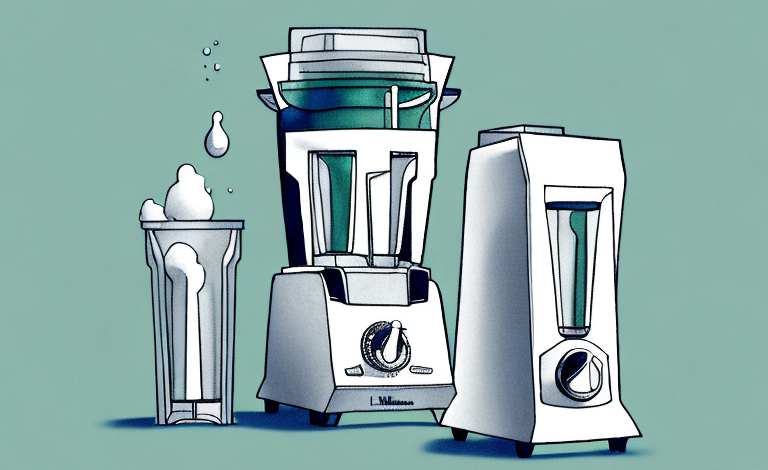Fingerprint locks are an excellent investment for security-conscious individuals who are looking for a reliable and convenient way to secure their homes or businesses. However, one crucial question that often comes to mind is how long these locks last. In this article, we’ll discuss the factors that affect the lifespan of fingerprint locks, what you should look for when choosing a high-quality lock, and how to ensure its longevity through proper maintenance techniques. We’ll also compare the lifespan of fingerprint locks to other lock types and offer real-life examples of how long they can last in various scenarios.
Understanding Fingerprint Lock Technology
Firstly, let’s take a moment to define what a fingerprint lock is and how it works. Fingerprint locks use biometric technology to unlock doors. Instead of a traditional key or code, these locks recognize the unique pattern of a person’s fingerprints. This recognition occurs by scanning the individual’s fingertip and matching it to a pre-stored fingerprint template within the lock’s database. If the print matches, the lock releases and opens the door. Fingerprint locks are often very secure since each person’s fingerprint is unique and challenging to replicate.
One of the benefits of fingerprint lock technology is that it eliminates the need for physical keys or memorizing codes, which can be lost or forgotten. This makes it a convenient and reliable option for securing homes, offices, and other spaces. Additionally, some fingerprint locks come equipped with advanced features such as remote access and monitoring, allowing users to control access to their property from anywhere in the world.
However, it’s important to note that fingerprint lock technology is not foolproof. In some cases, the scanner may fail to recognize a person’s fingerprint due to factors such as dirt, sweat, or injury. Additionally, there is always the risk of the lock being hacked or bypassed by skilled individuals. As with any security measure, it’s essential to weigh the benefits and drawbacks of fingerprint lock technology and use it in conjunction with other security measures for maximum protection.
Factors Affecting the Lifespan of Fingerprint Locks
When it comes to understanding the lifespan of fingerprint locks, various factors are worth considering. These factors include the quality of the lock, frequency of use, environmental conditions like humidity, and the level of maintenance the lock receives.
The Quality of the Lock
The quality of the lock largely determines its lifespan. It’s vital to choose high-quality locks with sturdy frames, reliable sensors, and well-engineered electronic components. Cheap locks are often more prone to failure, and the biometric technology may not work correctly.
Frequency of Use
If a lock is being used extensively, it’s more likely to wear out faster than one that’s rarely used or only used occasionally. Therefore, it’s worth considering the frequency of use when deciding which lock to install and what level of maintenance it needs.
Environmental Conditions
Environmental factors such as temperature, humidity, and water exposure can have a significant impact on the lifespan of a lock. High humidity levels can cause rusting, and water damage can cause electronic components to fail. Installing a lock in harsh environments like areas with high humidity or water exposure may require special considerations to ensure its longevity.
The Level of Maintenance the Lock Receives
Proper maintenance of fingerprint locks is crucial for their longevity. Regular cleaning, battery checks, and replacement, software updates, and cleaning of the sensors are all critical maintenance steps to keep a lock working correctly.
Installation Process
The installation process of a fingerprint lock can also affect its lifespan. If the lock is not installed correctly, it may not function correctly, leading to premature failure. It’s essential to hire a professional locksmith to install the lock to ensure that it’s done correctly.
User Error
User error can also affect the lifespan of a fingerprint lock. For example, if a user tries to force the lock open or uses excessive force when scanning their fingerprint, it can damage the lock’s sensors and electronic components. Proper education and training on how to use the lock correctly can help prevent user error and prolong the lock’s lifespan.
Common Causes of Fingerprint Lock Failure
Like any electronic device, fingerprint locks can sometimes fail, despite every effort to maintain them correctly. Some common causes of fingerprint lock failure include dead batteries, mechanical malfunctions, software glitches, and false rejects. False rejects occur when the lock fails to recognize an authorized user’s fingerprint, while mechanical faults occur when internal mechanisms break down, rendering the lock inoperable.
Another common cause of fingerprint lock failure is environmental factors. Extreme temperatures, humidity, and exposure to direct sunlight can all affect the performance of the lock. For example, if the lock is installed in an area with high humidity, moisture can accumulate on the sensor, making it difficult for the lock to read fingerprints accurately.
Additionally, improper installation can also lead to fingerprint lock failure. If the lock is not installed correctly, it may not function properly, and the sensor may not be able to read fingerprints accurately. It is important to follow the manufacturer’s instructions carefully when installing a fingerprint lock to ensure that it is installed correctly and functions properly.
Signs that Your Fingerprint Lock Needs to be Replaced
Even with the best maintenance practices, fingerprint locks may, over time, show signs of wear and tear. Some typical signs that a fingerprint lock needs replacing include unresponsive or slow sensors, frequent false rejects, and mechanical issues. It’s essential to pay attention to these signs and replace the lock before it causes security issues.
Another sign that your fingerprint lock needs to be replaced is if it has been compromised. If someone has gained unauthorized access to your lock, they may have tampered with it or damaged it in some way. In this case, it’s crucial to replace the lock immediately to ensure the security of your property. Additionally, if your lock is outdated and no longer supported by the manufacturer, it’s time to consider replacing it with a newer, more secure model.
Proper Maintenance Techniques to Prolong the Life of Your Fingerprint Lock
In this section, we’ll discuss some proper maintenance techniques that can help you prolong the life of your fingerprint lock.
Cleaning
Regular cleaning of the sensor and the frame of the lock is critical to prevent dirt and other debris from interfering with the lock’s operation.
Battery Replacement
Battery checks and replacement are essential to ensure the lock continues to function optimally. A dead battery can cause the lock to malfunction, so regular checks and replacement are crucial.
Software Updates
Updating the lock software ensures that it’s working correctly and all necessary patches are installed, reducing the risk of malfunctions.
Proper Installation
Proper installation of the fingerprint lock is crucial to ensure its longevity. It’s essential to follow the manufacturer’s instructions carefully and ensure that the lock is installed correctly. Improper installation can cause the lock to malfunction and reduce its lifespan.
Regular Testing
Regular testing of the fingerprint lock is necessary to ensure that it’s working correctly. You can test the lock by trying to open it with different fingers or by using the backup key. Regular testing can help you identify any issues with the lock and address them promptly, prolonging its lifespan.
How to Choose a High-Quality Fingerprint Lock for Longevity
When choosing a fingerprint lock, there are several factors to consider to ensure its longevity.
Brand and Reputation
It’s important to choose a reputable brand known for producing high-quality locks with advanced features that offer excellent security solutions.
Material Quality
The material quality plays a vital role in the lifespan of the lock. Choosing an all-metal construction frame with high-quality electronic components will ensure longevity.
Certifications
Look for fingerprint locks that have passed certification standards like IP65, which means they offer complete protection from dust and water.
Additional Features
In addition to the above factors, consider the additional features that the fingerprint lock offers. For example, some locks come with a backup key or a keypad in case the fingerprint scanner fails. Others may have a mobile app that allows you to control the lock remotely. These features can add convenience and security to your lock, making it a worthwhile investment for the long term.
Comparing the Lifespan of Fingerprint Locks to Other Types of Door Locks
Fingerprint locks are often considered more secure and reliable than traditional key or electronic locks. While they may require more maintenance, they tend to have a longer lifespan. Electronic locks usually last 3-6 years, while fingerprint locks can last up to 10 years or more with proper maintenance. Key locks tend to have a relatively short lifespan of around 5 years or less, making them a less reliable option.
It is important to note that the lifespan of a lock can also depend on the frequency of use and the environment in which it is installed. For example, a fingerprint lock installed in a high-traffic area may experience more wear and tear than one installed in a low-traffic area. Additionally, locks installed in areas with extreme temperatures or humidity levels may have a shorter lifespan. Therefore, it is important to consider these factors when choosing a lock for your specific needs.
Real-Life Examples of Fingerprint Lock Lifespan in Different Scenarios
The lifespan of fingerprint locks can vary depending on various factors like environmental conditions, frequency of use, and maintenance. In ideal conditions, a fingerprint lock can last up to 20 years, but in high-use environments, it’s more realistic to expect a lifespan of around 10 years.
One factor that can significantly impact the lifespan of a fingerprint lock is the quality of the lock itself. Higher quality locks are often made with more durable materials and have better internal components, which can extend their lifespan. On the other hand, lower quality locks may have a shorter lifespan due to their inferior construction and components.
Another factor that can affect the lifespan of a fingerprint lock is the level of security required. For example, a fingerprint lock used in a high-security facility may be subject to more frequent use and require more maintenance, which can shorten its lifespan. In contrast, a fingerprint lock used in a residential setting may have a longer lifespan due to less frequent use and lower security requirements.
Troubleshooting Common Issues with Fingerprint Locks for Extended Use
Despite maintenance and proper usage, fingerprint locks may still face common issues like false rejects and unresponsive sensors. Troubleshooting these issues may require professional attention, or they may be fixed with simple solutions, such as a software update or cleaning.
Conclusion
Fingerprint locks are an excellent investment for security-conscious individuals, offering a convenient and secure way to secure homes or businesses. When evaluating the lifespan of these locks, several factors are worth considering, such as the quality of the lock, maintenance practices, and environmental factors. It’s worth investing in a high-quality fingerprint lock, regularly maintaining it, and replacing it when necessary to ensure excellent security solutions at all times.



